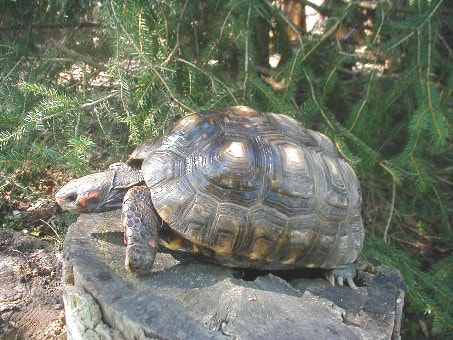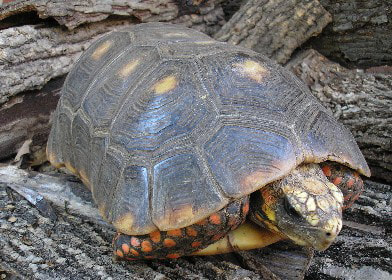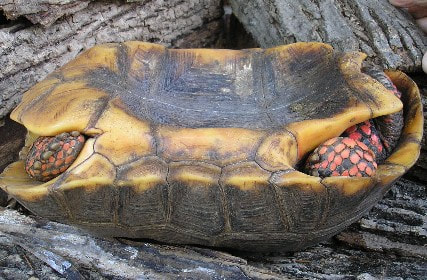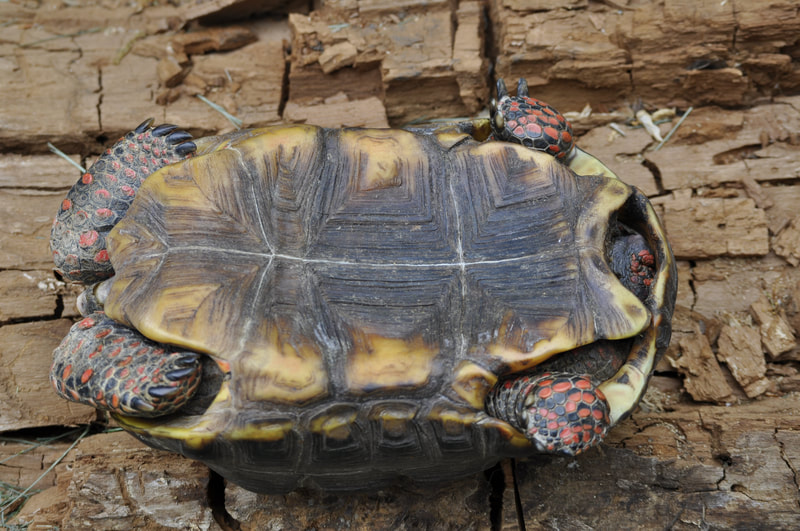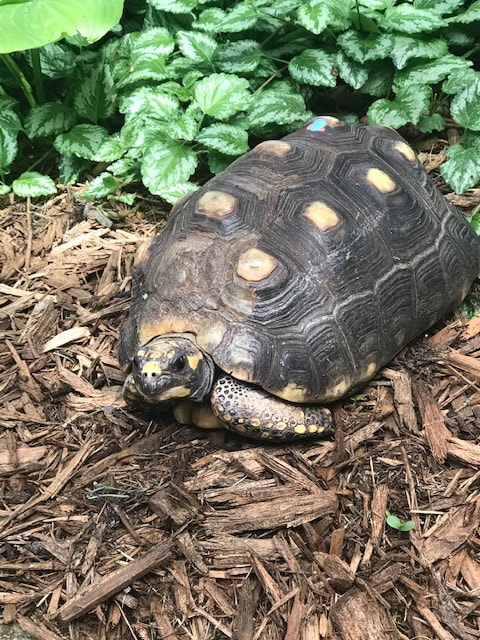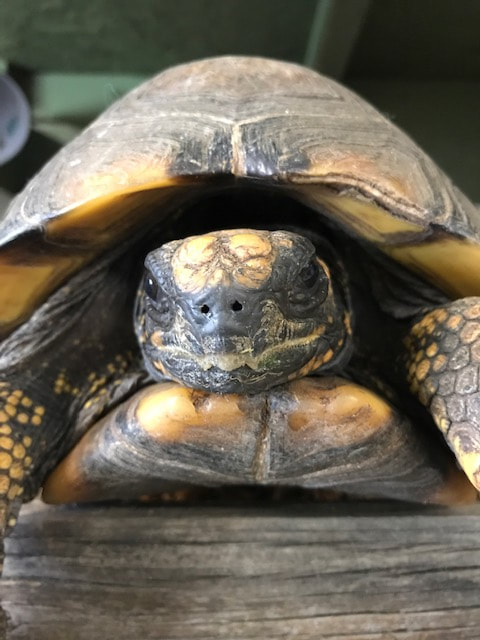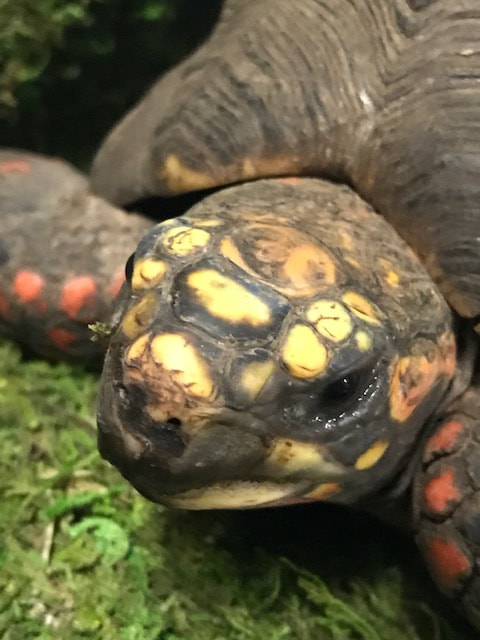Redfoot and Yellowfoot tortoises
The Geochelone Carbonaria, the Red Footed Tortoise is part of the genus of the largest tortoise families. Their carapace is oval and elongated. The males carapace is indented midway on both sides, making a peanut shape when viewed from the top. The plastron is yellowish brown with some dark areas along the seams and is not hinged. The males have a deep concavity in the center. The legs are heavy with no toe webbing and each front foot has 5 claws. The head has small scales that are yellow, red or orange. The jaws are dark with the upper
jaw slightly hooked. The males are larger than the females with a length approximately 13-14", while the
females are 11-12". Males can weigh up to 20 lbs. They have a way of communicating by bobbing their
heads. The Redfooted toroise is from South America and the Caribbean. They are a large tortoise with red,
yellow or orange scales on its legs and head, sometimes making it difficult to distinguish between a
Redfoot and Yellowfoot. The Yellowfoots have longer scales on the top of their heads close to the nose.
These are called prefrontal lobes. Redfoots have shorter prefrontal lobes. During mating, the male
makes a clucking type sound. After mating, the female can lay up to 15 eggs and incubation time is typically
150 days. The ideal habitat is moist, grassy areas enjoying a humid forest area. Their diet includes
grasses, cacti, fruits and occasionally carrion.
Our Redfoots and Yellowfoots are very personable and love attention and yummy treats. Some of ours are pyramided due to bad care from previous caretakers. An improvement of habitat and diet improves any
new shell growth. Our outdoor habitats are spacious and planted with edible vegetation. Unfortunately,
it doesn't stay long after a few days of grazing. Two large deep trays are filled with water for drinking and
soaking. The shelter is well covered and enables them to have a shady, quiet area. Because they do not
hibernate and Indiana winters are cold, the Redfoots come in to reside in their 'Winter Condo' until spring
stays a normal night temperature of 50 degrees.
jaw slightly hooked. The males are larger than the females with a length approximately 13-14", while the
females are 11-12". Males can weigh up to 20 lbs. They have a way of communicating by bobbing their
heads. The Redfooted toroise is from South America and the Caribbean. They are a large tortoise with red,
yellow or orange scales on its legs and head, sometimes making it difficult to distinguish between a
Redfoot and Yellowfoot. The Yellowfoots have longer scales on the top of their heads close to the nose.
These are called prefrontal lobes. Redfoots have shorter prefrontal lobes. During mating, the male
makes a clucking type sound. After mating, the female can lay up to 15 eggs and incubation time is typically
150 days. The ideal habitat is moist, grassy areas enjoying a humid forest area. Their diet includes
grasses, cacti, fruits and occasionally carrion.
Our Redfoots and Yellowfoots are very personable and love attention and yummy treats. Some of ours are pyramided due to bad care from previous caretakers. An improvement of habitat and diet improves any
new shell growth. Our outdoor habitats are spacious and planted with edible vegetation. Unfortunately,
it doesn't stay long after a few days of grazing. Two large deep trays are filled with water for drinking and
soaking. The shelter is well covered and enables them to have a shady, quiet area. Because they do not
hibernate and Indiana winters are cold, the Redfoots come in to reside in their 'Winter Condo' until spring
stays a normal night temperature of 50 degrees.
Pyramided carapace of Redfoot Healthy carapace of Redfoot
Plastron of Male Redfoot Plastron of Female Redfoot
The Yellow Footed Tortoise, Geochelone Denticulata, is also native to South America, favoring the rainforest
areas. They have yellow markings instead of the red or orange of the Red Footed Tortoise. They are also
larger than Red Foots. Because Redfooted Tortoises can have a variation of coloration, sometimes it
is difficult to distinguish between the two species. The Yellowfoots have longer scales on the top of
their heads close to the nose. These are called prefrontal lobes. Redfoots have shorter prefrontal lobes.
Their carapace is thick and brown with yellow patches. The head is brown with yellow markings.
The skin is black with yellow markings on the head and lower jaw. Some scales on the legs and tail
can be bright yellow. Males are approximately 16" in length while the females are larger, 24-30".
Their weight can be 25-35 lbs. Their diet is the same as Redfoots: grasses, cacti,
fruits and occasionally carrion. Their sexual maturity is at 8-10 years and life expectancy is 50 years.
Yellowfoot with scarring from a possible fire Notice the head scale pattern and yellow markings. Here is the head scale pattern of a Redfoot
